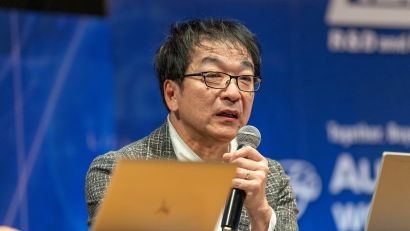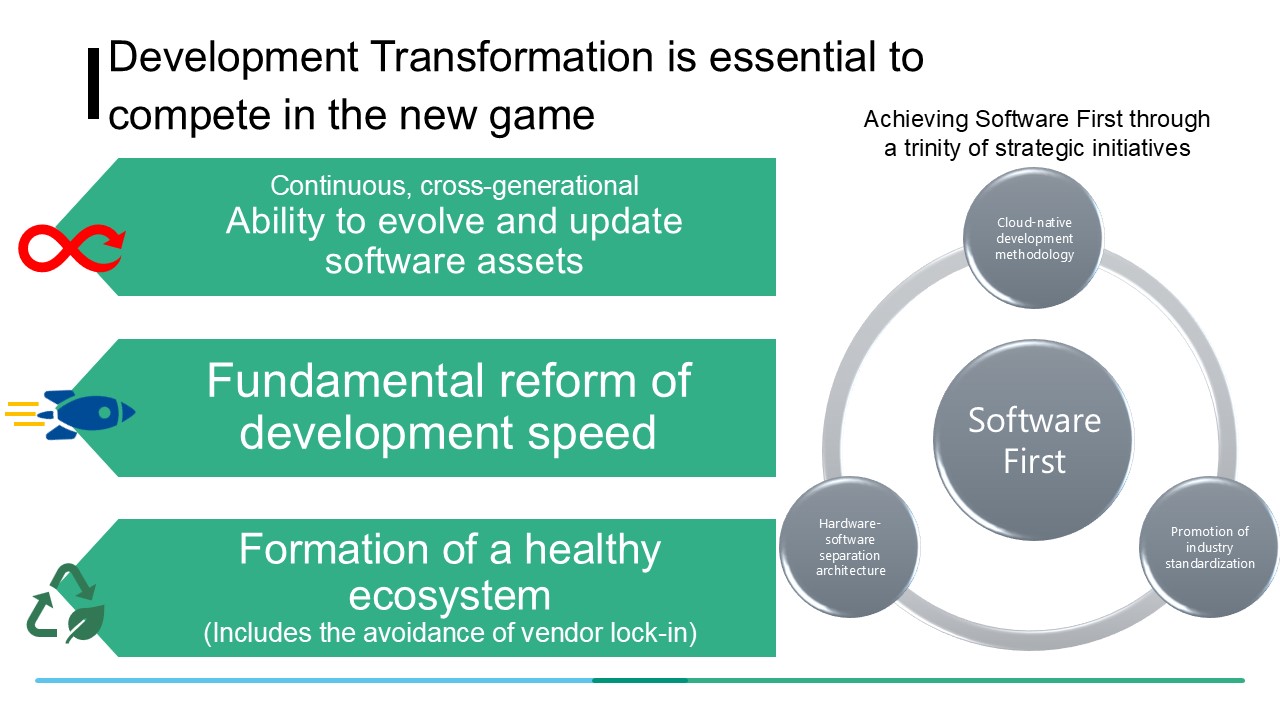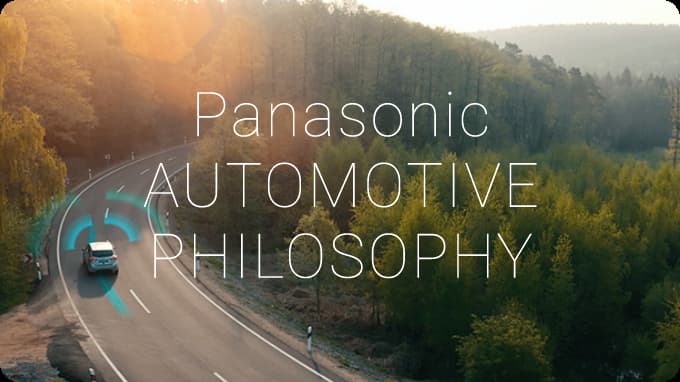Newsroom
Masashige Mizuyama, Chief Technology Officer, gave a keynote speech at Automotive World 2025. There, he shared his thoughts that the key to SDV transformation is Software First.

On January 22, 2025, Masashige Mizuyama, our company’s Executive Vice President and CTO, joined Tetsuo Sasaki, Fellow of Nissan Motor Co., Ltd. and Lei Zhou, Executive Officer of Deloitte Tohmatsu Consulting LLC as keynote speakers at the 18th Automotive World - Advanced Automotive Technology Show held at Tokyo Big Sight. He spoke about the importance of changing development methodologies to Software First in order to transform the automobile into a software-defined vehicle (SDV). More than 600 participants attended this lecture.

At the beginning, addressing the topic “What is SDV?”, Mizuyama introduced examples of mobile phones that underwent a software-defined transformation during the 2000s. “When the transition to smartphones took place, hardware device manufacturers focused on their existing technologies and vested interests, and failed to make fundamental changes in product development, such as architectural innovation and the formation of ecosystems*1. As a result, disruptors utilizing open platforms gained tremendous power,” he said, reflecting on the past.
- Ecosystem: Products created when companies in the same field collaborate. Or a structure in which companies from different industries share technologies and know-how to generate revenue. The formation of a healthy ecosystem is important for the development of the industry as a whole.
In the automotive industry, those with the ability to evolve software at high speed will gain a decisive competitive advantage. SDV is a game changer and three key transformations are critical for SDV: the ability to evolve and update software assets, a fundamental reform of development speed, and the formation of a healthy ecosystem. To achieve this, it is necessary to transform development into a Software First mindset.

Mizuyama also introduced our efforts to realize Software First development.
- Establishment of a cloud development environment Virtual Hardware Platform. Decoupling hardware and software makes it possible to develop software concurrently even before the hardware stage is available.
- VirtIO*2 is applied to the Virtual Hardware Platform. Leading automotive industry standardization by strategically open-sourcing.
- *2 VirtIO: A paravirtualization framework for efficient input/output (I/O) operations in a virtualized environment.
During the discussion, Mizuyama said, “In order to create greater value for cars with software, we must be able to continuously evolve software over hardware generations. For example, even if there are multiple car lineups, the same software must be applied and software updates must be equally available. An architecture that allows the decoupling of hardware and software is necessary to allow for consistently flexible choices aligned with the times. We have expanded VirtIO and have been leading the automotive industry to transition from hardware-first development to software-first development.”
He also introduced our Unified HMI technology, which controls the entire display system as a single virtualized screen. In vehicles, various applications, such as infotainment and meters, use electric control units (ECUs) to display information on individual screens. Unified HMI allows multiple screens to be managed as a single virtual screen, enabling flexible design for display and application layouts. This makes development of user experiences more agile. Mizuyama said that it would be important to create a system that encourages agile development in shorter cycles through technologies such as Unified HMI.
When a participant asked, “Regarding SDV transformation, there are two approaches: developing a company’s own proprietary operating system(OS) or utilizing a common platform through open source, etc. Which is better for maximizing a car’s UX?”, Mizuyama responded, “In the automotive industry, we believe that ecosystems need to be built using different OSes tailored to the characteristics of each functional domain. Therefore, VirtIO, which is under the OS, is the key to a healthy ecosystem. In addition, there is no choice but to use open source in SDV transformation. It is important to proactively initiate OSS (open source software) development, involve related players, and standardize the automotive industry in order to realize our own strategies. We would like to work together in the automotive industry to build a healthy ecosystem.” he said enthusiastically.
Finally, the moderator, Mr. Zhou, asked for a message to the next generation. Mizuyama said, “Be aggressive! In the mobile phone industry, even though it was clear that changes had been happening, the same development methodologies were continued, which led to a catastrophic situation. In the automotive industry, which is at a major turning point due to SDV and AI, I want you to step forward aggressively with a sense of crisis, understanding that unless you take on challenges that have not been tackled before, it could lead to destruction,” he said, delivering a message filled with passion for transformation.
Participants appreciated the lecture, leaving comments such as, “‘Be aggressive!’ resonated with me, so I want to act aggressively,” and “I felt a sense of crisis after hearing about the decline of the cell phone business.”
